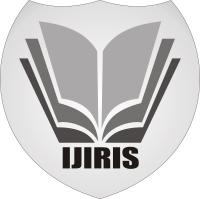Article,
Performing Network Simulators of TCP with E2E Network Model over UMTS Networks
IJIRIS::International Journal of Innovative Research in Information Security, 3 (2): 01-09 (February 2016)
Abstract
Wireless links losses result in poor TCP throughput since losses are perceived as congestion by TCP with the evolution of 3G technologies like Universal Mobile Telecommunication System (UMTS), the usage of TCP has become more popular for a reliable end-to-end (e2e) data delivery. However, TCP was initially designed for wired networks and therefore it suffers performance degradation due to the radio signal getting affected by fading, shadowing and interference. There are many strategies proposed by the research community on how to improve the performance of TCP over wireless links such as introducing link-layer retransmission, explicitly notifying the sender of network conditions or using new variants of TCP. As UMTS network coverage and availability are currently experiencing rapid growth, optimization of various internal components of its wireless network is very important. One of the optimization is the introduction of High Speed Downlink Packet Access (HSDPA). This architecture not only allows higher data rates but also more reliable data transfer by the introduction of Hybrid ARQ (HARQ). With this enhancement to the UMTS network, it becomes vital to see the performance of TCP in such a network. Therefore in this thesis, we try to evaluate two aspects of UMTS networks: first, the impact of HSDPA parameters like scheduling algorithm and RLC/MAC-hs buffer size on overall performance of TCP and second, to study the behaviour of two categories of TCP rate and flow control: loss based and delay based. Our simulation shows that delay based TCP tends to perform better than loss based TCP in our selected scenarios. The simulations are performed using the network simulator NS-2 with an e2e network model for enhanced UMTS (EURANE).
